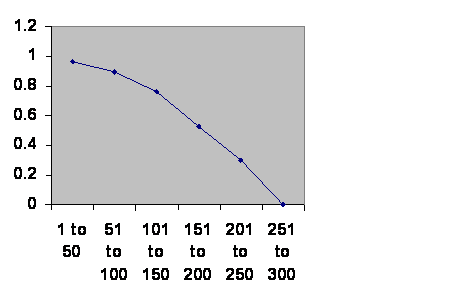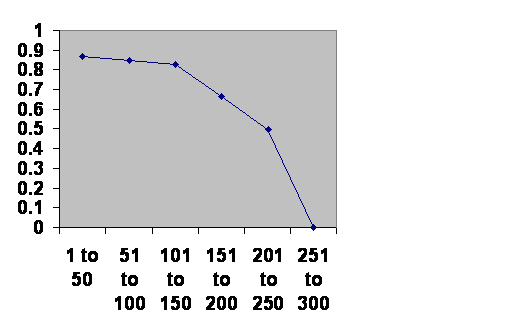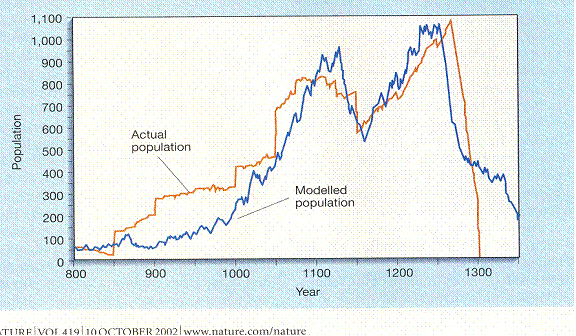
\
December 8, 2012
\
to be posted on nobabies.net
Douglas J. Kennett
Department of Anthropology
Pennsylvania State University
University Park, PA 16802
djk@psu.edu
Dear Douglas Kennett:
Of course I enjoyed your elegant article about the fall of the Mayans. (Douglas J. Kennett et al Development and Disintegration of Mayan Political Systems in Response to Climate Change SCIENCE vol. 338 no. 6108 November 9, 2012 page 788) We certainly are having our season of Mayan catastrophism. Not to be a grinch – I do try to be tolerant of people’s interests whenever possible – but it seems to me that superstition and panic are not even the worst of the December 21 discussions I read. People seem angry or just plain mean. Is that the way many people want to live or die? I mean it could be kind of fun. Look back at the long counts and see what happened to civilizations. There seem to me a lot of versions of just what a long count was, so there is plenty of scope for guessing what important ancient events might be as distinct from unimportant ones.
But back to more serious stuff, something laid the Mayan high civilization low even before their calendar reached its current state. For years I was rather smug about it. I looked at the survival of Mesopotamian civilizations (graphing age against chance of surviving the next fifty years) and got this:
Information taken from R. H. Carling THE WORLD HISTORY CHART International Timeline Inc. Vienna, VA 1985.

You can see that things get more and more dangerous as time goes on. Then if you pool Rome with the Classical Mayans and Chaco Canyon (in order to get something like decent statistics) you get this.
 And
And
Information taken from BBC and Tainter..
Perhaps I could be forgiven for inferring a similar pattern.
Of course you follow in a well established principle. Jarred Diamond looked at the number of occupied households in Long House Valley (“actual population”) and compared them with tree ring thickness (“modelled (sic) population”).

Jared M. Diamond, “Life with the Artificial Anasazi,” NATURE, vol 419 no 6907, October 10, 2002 p 567.
The curves match well enough so that it cannot be coincidence. He concluded that population was determined by rainfall. That should seem familiar. But I have some problems. Obviously the stepwise increases in population are immigration. These folks move in groups. If that is so, nobody ever leaves. Furthermore people are moving in at a time when the rainfall cannot sustain them. It seems to me that these expert farmers (nobody else has ever managed to farm there) were cultivating the trees, grubbing at the roots, mucking them, pruning or whatever. They knew how much wood they would need and did whatever it took to provide it.
But there is this three hundred year interval between takeoff of the population and crash. We have already seen the same three century nemesis in other cultures. So I thought I knew what hit the Mayans; it’s the same thing that can strike any population numbering over a few hundred.
Then I read your article. You compare speleothem thickness, kind of annual rings in stalagmites, with civilization crashes. For a few hysterical moments I had fantasies of Mayans mucking, pruning and grubbing at the stalagmites, but sanity returned.
They didn’t cultivate in caves, but they clearly cultivated the ground. And could that affect the speleothem thickness? Well which allows more evaporation, a jungle or a cleared field? I do not know. The jungle shades the ground, keeping it cool, but it also sends down roots to draw moisture. Which is the bigger effect. Since I don’t know, I shall ignore it.
Then there is runoff. When it rains a cleared field is more subject to runoff than a jungle. Of course the speleothem record will lag behind the surface activity. By how long, you can better estimate than I.
So the crisis-associated-with-thin speleothem correlation means that crises tended to follow maximum cultivation, meaning maximum population, after a delay. The extinction of Long House Valley followed the maximum population after a delay of 30 years. How fast does ground water move? I do not know.
The notion that a big random mating population faces a fertility decline can be inferred from a number of studies:
On the Regulation of Populations of Mammals, Birds, Fish and Insects, Richard M. Sibly, Daniel Barker, Michael C. Denham, Jim Hope and Mark Pagel SCIENCE vol. 309 July 22, 2005 page 609
An Association between Kinship and Fertility of Human Couples Agnar Helgason et al. SCIENCE vol. 329 no. 5864 February 8, 2008 page 813 – 816
Human Fertility Increases with marital radius. Rodrigo Labouriau and António Amorim. GENETICS volume 178 January 2008 page 603
Comment on “An Association Between the Kinship and Fertility of Human Couples,” Rodrigo Labouriau and António Amorim SCIENCE vol. 322, page 1634b December 12, 2008
I thought you might be interested.
Sincerely,
M. Linton Herbert MD
There have been 73,614 visitors so far.
Home page.